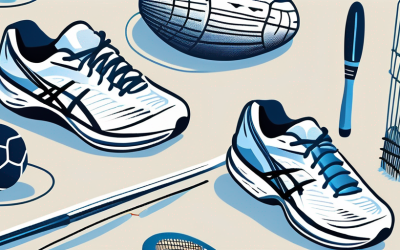If you’re suffering from SI joint inflammation, you may wonder if a chiropractor visit can help alleviate your discomfort. Well, wonder no more because, in this article, we’ll explore the potential benefits of chiropractic care for SI joint inflammation and discuss various treatment options that chiropractors may offer.
Understanding SI Joint Dysfunction: Causes and Symptoms
Before we delve into how chiropractic adjustments can help ease SI joint inflammation, let’s first understand what causes SI joint dysfunction and its associated symptoms. The sacroiliac (SI) joint is located in the pelvis and connects the sacrum to the ilium. This joint is crucial in transmitting forces between the upper and lower bodies.
When the SI joint becomes inflamed (Sacroiliitis), it can result in pain and discomfort in the lower back, buttocks, and legs. The causes of SI joint dysfunction can vary, but most commonly, it occurs due to injury, inflammation, or excessive stress on the joint. Some common risk factors include poor posture, repetitive activities, pregnancy, and certain medical conditions.
Common symptoms of SI joint dysfunction include:
- Lower back pain
- Buttock pain
- Pain in the hips or groin area
- Pain radiating down the legs
- Inability to stand or sit for prolonged periods
If you’re experiencing any of these symptoms, it’s essential to consult with a healthcare professional, such as a chiropractor, for an accurate diagnosis and appropriate treatment.
It’s important to note that SI joint dysfunction can often be misdiagnosed as other conditions, such as sciatica or hip arthritis, due to the overlapping symptoms. Therefore, a thorough evaluation by a healthcare provider is crucial for proper management of the condition. Imaging studies like X-rays, MRIs, or CT scans may be necessary to confirm the diagnosis and rule out other potential causes of the symptoms.
Additionally, conservative treatments like chiropractic adjustments, physical therapy, and specific exercises can help alleviate pain and improve the function of the SI joint. Chiropractic care, in particular, focuses on restoring proper alignment and mobility to the spine and pelvis, which can reduce inflammation and discomfort in the SI joint.
How Chiropractic Adjustments Target SI Joint Inflammation
The Role of Chiropractic Adjustments
One of the primary treatment techniques chiropractors use to address SI joint inflammation is spinal adjustments. Chiropractic adjustments, also known as spinal manipulations, involve applying controlled force to the spine to restore proper alignment and mobility. By doing so, chiropractors aim to alleviate pain and promote healing.
Regarding SI joint inflammation, chiropractors may perform specific adjustments targeting the affected joint. These adjustments can help reduce inflammation, restore normal joint function, and alleviate pain. Chiropractors use their hands or specialized instruments to apply precisely directed pressure to the joint to restore its natural alignment.
Chiropractic adjustments are typically safe and well-tolerated. However, consulting with a qualified chiropractor who will thoroughly evaluate your condition and medical history before recommending any specific treatment approach is essential.
Additional Treatment Modalities
In addition to chiropractic adjustments, chiropractors may incorporate other treatment modalities to support the healing process and provide holistic care. Depending on your specific needs, your chiropractor may recommend:
- Massage therapy can help relax muscles, improve circulation, and reduce tension in the affected area. It can complement the effects of chiropractic adjustments by further reducing pain and inflammation.
- Soft tissue therapy: This technique targets the muscles surrounding the SI joint. Chiropractors may use various techniques to release muscle tension, improve flexibility, and enhance overall joint function.
These complementary therapies can work synergistically with chiropractic adjustments to provide a comprehensive SI joint inflammation treatment approach.
Another treatment modality that chiropractors may utilize is heat therapy. Applying heat to the affected area can help increase blood flow, relax muscles, and reduce pain. Chiropractors may use heating pads, warm towels, or therapeutic ultrasounds to deliver heat therapy to the SI joint, promoting healing and providing additional relief.
In some cases, chiropractors may also recommend exercises and stretches to strengthen the muscles surrounding the SI joint and improve joint stability. These exercises can help prevent future inflammation and maintain the benefits of chiropractic adjustments and other treatment modalities.

Exercise and Stretching Recommendations for SI Joint Health
While chiropractic care can be vital in managing SI joint inflammation, it’s essential to incorporate self-care practices into your routine. Exercise and stretching can help improve SI joint stability, promote joint health, and prevent future episodes of inflammation.
Here are some exercise and stretching recommendations that may benefit individuals with SI joint dysfunction:
- Core-strengthening exercises: Strengthening the muscles around the SI joint can provide added support and stability. Exercises such as planks, bird-dog, and bridges can help strengthen the core muscles.
- Low-impact aerobic exercises: Engaging in low-impact activities like swimming or cycling can improve overall fitness without putting excessive stress on the SI joint.
- Stretching exercises: Stretching the muscles surrounding the SI joint can help improve flexibility and prevent muscle imbalances. Some beneficial stretches include hamstring, piriformis, and hip flexor stretches.
Before starting any exercise program, it’s crucial to consult with a healthcare professional or a qualified personal trainer who can provide guidance tailored to your specific needs and limitations.
Core Strengthening Exercises
Now, let’s dive deeper into the benefits of core-strengthening exercises. These exercises provide support and stability to the SI joint and help improve posture and overall body strength. Planks, for example, engage the deep abdominal muscles, including the transverse abdominis, which act as a natural corset for the spine. By strengthening these muscles, you can enhance the stability of the SI joint and reduce the risk of inflammation.
Low Impact Aerobic Exercises
Additionally, low-impact aerobic exercises offer many benefits for individuals with SI joint dysfunction. Swimming, for instance, provides a full-body workout while minimizing the impact on the joints. The buoyancy of water reduces the stress on the SI joint, allowing for a safe and effective cardiovascular workout. Cycling is another excellent option as it is a non-weight-bearing exercise that helps improve cardiovascular fitness without straining the SI joint.
Now, let’s explore the importance of stretching exercises in more detail. Hamstring stretches, for instance, target the muscles at the back of the thigh, which can become tight and contribute to SI joint dysfunction. Regularly stretching these muscles can improve flexibility and reduce the strain on the SI joint.
Piriformis stretches, on the other hand, specifically target the piriformis muscle, which runs across the buttocks and can often become tight and contribute to SI joint pain. Stretching this muscle can help alleviate tension and promote SI joint health. Lastly, hip flexor stretches focus on the muscles at the front of the hip, which can become tight due to prolonged sitting or inactivity. By stretching these muscles, you can restore balance and prevent muscle imbalances that may affect the SI joint.
In conclusion, incorporating exercise and stretching into your routine can be a valuable addition to chiropractic care for managing SI joint inflammation. These practices improve SI joint stability and enhance overall fitness, flexibility, and muscle balance.
Consult a healthcare professional or qualified physical therapist to ensure your exercise program is tailored to your needs and limitations. By taking a proactive approach to SI joint health, you can find relief, improve your overall well-being, and prevent future episodes of inflammation.



